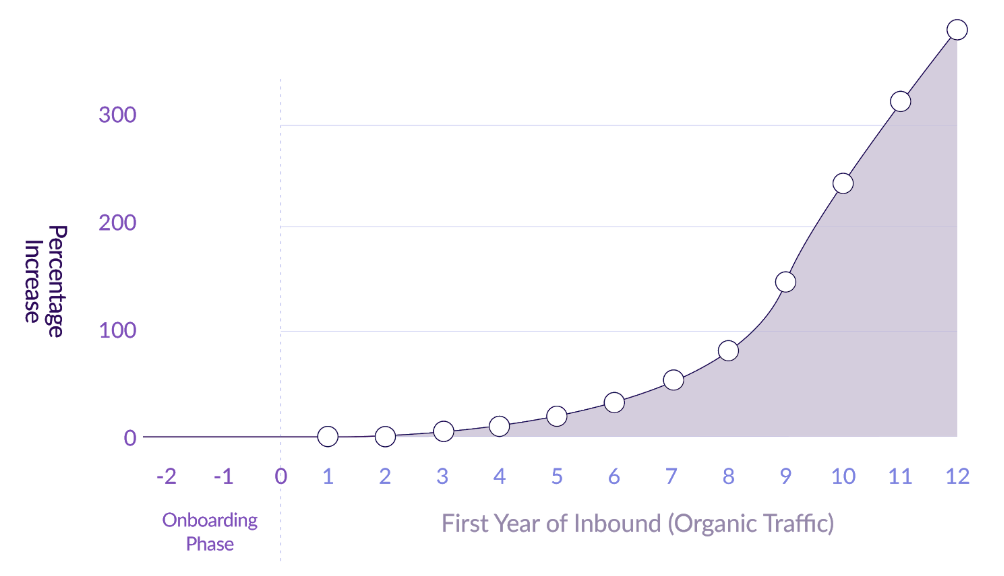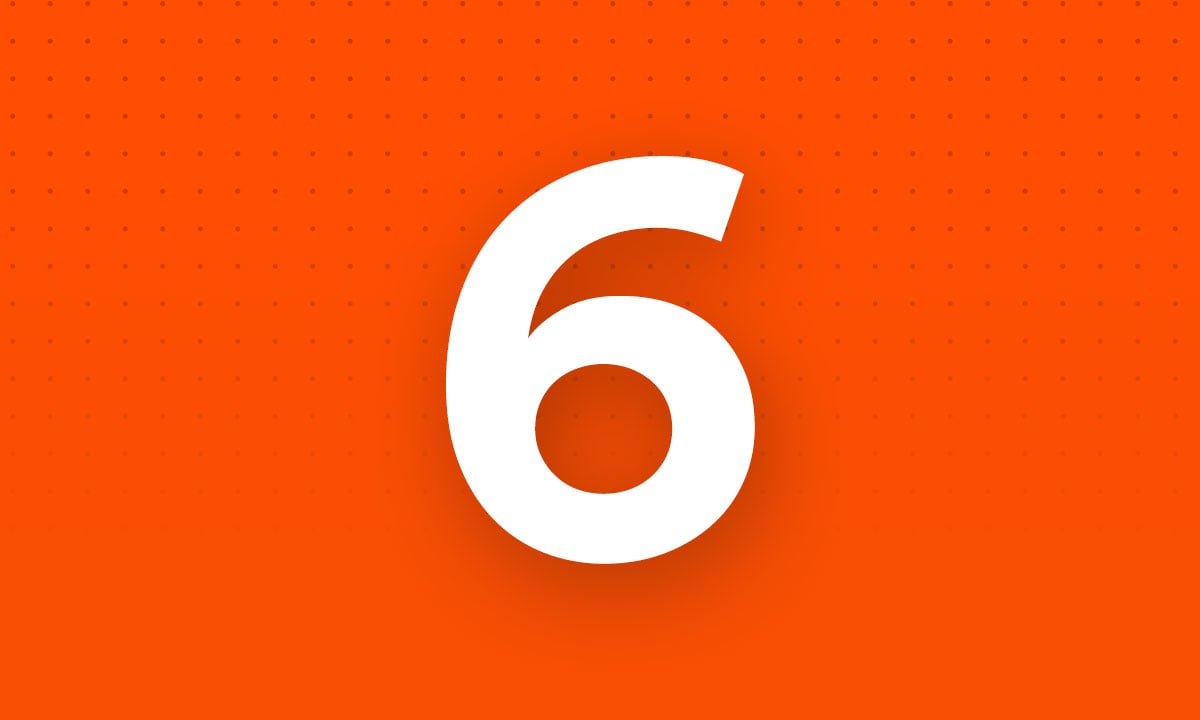Lead grading (also known as lead scoring) is the process of assigning numerical values to each lead...
Inbound is a better way to market, a better way to sell and a better way to serve your customers - all to help your company grow in the long-term.
We know you probably have a lot of questions right now. When will you start seeing results? How long does it take to get some traction? How long should it take to plan everything before launch?

Want to spend more time going through this at a more convenient time?
You can download your copy here:
Let’s say you start in January. This will help you visualise what a typical year in inbound looks like and help you plan your inbound journey.
Here’s what you should expect...
Creating your overall strategy and setting up HubSpot
January & February
Creating your overall strategy is the most important stage of your inbound journey. Everything you do during these first two months is what will help shape your campaigns and see you gain incredible results. So, it’s vital that you nail every single aspect and fully prepare.
Think along the lines of buyer’s journey preparation and persona research so you know who you’re marketing to. This is also helpful for the content side of things as you can shape your content to your suited audience. Don’t forget to conduct an audit so you can see which gaps in the buyer’s journey you should fill.
This ‘pre-start mode’ is to learn where you need help and the areas you need to fix. It’s to create a concept that will shape your journey and then put together the strategy you need to focus on. All of this information will turn this hard work into campaign plans.
“Can I not just skip this?”
In short, we don’t recommend it. You might be tempted to squeeze two months’ worth of work into a couple of weeks (or even days), but that can massively impact future results if the strategy phase isn’t set up properly. There’s a lot to do that needs to run correctly and two months gives you the perfect window to do that. It’s not a wasted two months as it’ll set you up better for the future.
Content production
March
Inbound marketing primarily revolves around content, so you need to consistently churn out the best quality content possible. During the third month (and regularly after it), make sure you produce download pieces, landing pages, thank you pages, videos and at least two to three blogs a month. Get your team involved and keep it consistent. This content is what will help drive relevant traffic, convert visitors into leads, educate readers and provide long-term opportunities.
Depending on what you find when developing your strategy (and to stay on track), we’ve found that focusing your first campaign around quick wins is a great start. When creating your blog posts, focus on some of the obvious questions your customers always ask and answer them.
“I’ve published my first blog...what now?”
Now it’s time to post again. Posting needs to be consistent and we recommend that you publish at least one to three blogs per week to show Google’s spiders that your website is live and active. Just make sure the number is manageable and you do it regularly. To back this claim up, we conducted an experiment by blogging every day for a month and the results were brilliant. You can read more about it here.
“What’s the benefit of video?”
As important as written content is, it’s not the only type of content you should focus on. Remember those buyer’s personas we mentioned you need to create in the strategy phase? You might find a big chunk of your audience prefers to consume content in a two-minute video rather than a 10-minute blog.
Research also shows that more than 50% of consumers want to see videos from brands, 90% say videos help them make buying decisions and including videos on landing pages can increase conversions by 80%.
Amplify your content
April and May
In the next two months, you should focus on getting your content to your audience. To do this, push your content on your social media accounts, outreach to other websites and post guest blogs. The backlinks to your website are super valuable so take advantage of them.
You may also want to run pay-per-click (PPC) campaigns. Paid ads let you put your content in the feeds of your targeted personas and is a great way
to reach more potential conversions and attract highly-qualified traffic.
Also, consider pushing your content through email workflows and eshots. Not only will automation save loads of time but you’ll also always deliver the right content to the right people at the right time. Get your process finalised so you don’t face delays in getting your content live.
Quick tips to boost your strategy
- Always segment your database as less is more. Don’t be afraid to send emails to a smaller number of people as it can perform better.
SEO
- Don’t be afraid to get rid of content that no longer performs - and don’t ignore the unsexy technical stuff!
- Don’t stuff content with keywords. Include them in the meta title, H1-4 and the body text, but it’s the content itself which matters the most.
Content
- You don’t need to order keywords in the exact order, especially if it’s tricky. Keep them close together as Google is smart enough to understand.
Paid Search
- Use historical search data to know your target demographics as well as device targeting on Google Ads to ensure your ads show to people you want to interact with.
- Keep it relevant. Keep your ad groups small - 15-20 keywords at most. That way, keywords will be relevant to the advert which helps with your quality score, expected CTR, landing page experience and so on.
Social
- Don’t just talk about your brand or your product and/or services. Talk about topics and get involved in conversations that mean something to your brand as this will then create trust within your audience. Social isn’t all about selling, it’s about connecting and engaging and creating conversations with your audiences.
- Regularly look at the data and be reactive to your strategy when needed, find out more about who your audience is and what they like, and be willing to switch your strategy. Get as much information as you can so you can create really rich and engaging content.
Need some assistance? See how Digital 22 can help you launch your first inbound campaign.
Still no results? Be patient!
June and July
It’s completely understandable if you’re feeling a little impatient, frustrated and annoyed that the results probably aren’t what you expected. But be patient. Inbound definitely works but it’s a slow burner.
That’s why months one and two are so important as if you get everything done properly in the strategy phase, the results will eventually show. Just look at how much you’ve grown organically up to this point. Okay, it might not be where you thought you would, but it’s definitely an improvement.
Remember, good things come to those who wait!
FAQ: Why does inbound take so long?
Most inbound marketing campaigns take between six to nine months to start seeing a return on investment. These tactics might take longer than you want, but they get the proven results as long as you complete the strategy phase properly. You need to give content time to bed in and for SEO to take effect. That’s why growth takes as long as it does - but growth does come.
The boss is losing patience
The boss is breathing down your neck, you’re agitated that they’ll have questions you can’t answer and you’re almost completely fed up of waiting around for results. We get it, you’re eight months in and you expected a complete transformation.
This is where the quick-win campaign at the start should have bought you some time. You should also email out your content and offers to get some results depending on the health of your database. Focus on the channels you can control, such as PPC, email and social as you wait for organic traffic to pick up. You should also keep an eye on your competitors as it’s likely they’re creating content too.

But don’t let that pressure get to you. Just because eight months have passed, it doesn’t mean things aren’t on the up. Show your boss that your blog views have increased, the CTRs of your CTAs and emails, conversions...all of these metrics should be on the rise and what you can report on.
Hold your nerve!
Wait. What? How?
We know. It’s been eight months since your inbound journey officially started and being told to ‘hold your nerve’ is the last thing you want to hear, but trust us. Just take a quick look at your results from the previous eight months and the increases you’ve seen. Although they might not be at the level you were hoping just yet, it’s clear that things are looking up.
You’ve already seen out eight months, what’s the harm in waiting a little more? That’s when you’ll really notice that your efforts have paid off.
We’re on the rise!
September to December
Finally! Everything is starting to improve, leads are coming in and you’re reaping the benefits of inbound tactics. But it doesn’t end there. You might have increased your blog numbers, number of downloads, conversions and more, but the hard work doesn’t end there.
While you’re busy enjoying the results, it’s now time to get even more leads. This is a crucial time to ensure that blogs are re-checked and managed for CTA click-throughs and reshared on social media. It’s a good idea to keep an eye on the metrics to capitalise on conversion once traffic begins to rise.
“How can I get more leads?”
- Keep creating amazing content! (And optimise outdated content as well).
- Optimise high-traffic landing pages.
- Make sure you use your social media channels properly and don’t neglect any.
- Keep focusing on your email workflows.
- Invest in a CRM that will help you nurture leads into customers.
Achieving this level of success isn’t easy without expert help
We’ve sold you the dream with inbound marketing but you’ve probably realised that this can be really difficult to do on your own. That’s where we can help. We’re Digital 22, a team packed full of inbound marketing experts. We also happen to be the largest HubSpot agency in the UK, the #1 rated HubSpot agency in Europe and the 2018 HubSpot Partner of the Year.
So, we know a thing or two about all things inbound marketing and HubSpot. We’re passionate about what we do. We’ve seen businesses adopt inbound marketing and witnessed them grow in size and revenue. If you want to achieve success and grow as a business, then get in touch with us today…




